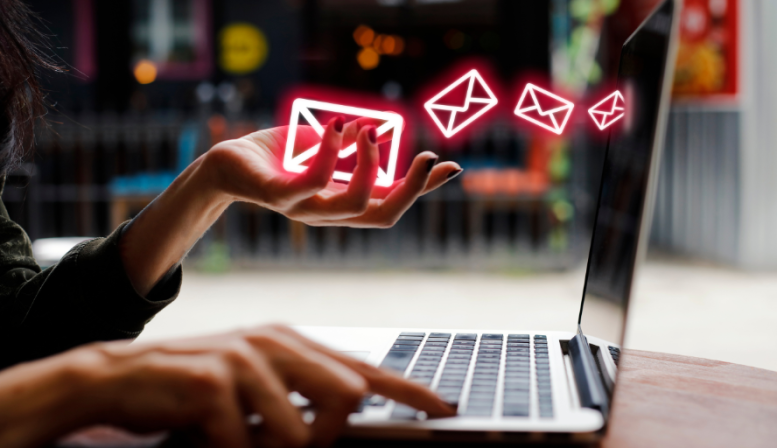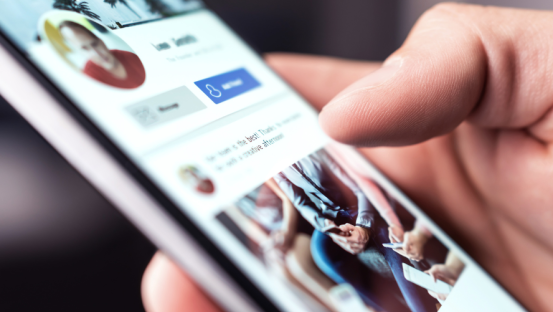Email Marketing for Public Speakers: Strategies to Promote Your Brand and Find Speaking Gigs

Who among us has never received an email? In the age of the internet, an outreach plan that does not involve email marketing is akin to digital sin. Simply put, a good email marketing strategy involves sending promotional messages or commercial content to a group of people via email.
Email marketing can aid in brand building for speakers and help them nurture relationships with potential or existing customers, promote a speaker's products or services, or drive traffic to a website. Email marketing can be an effective tool for a public speaker to promote upcoming speaking events, nurture audiences, and build a stronger personal brand.
However, to do so, you need a foolproof strategy that defines the who, what, and how of your emails. Let's take a look at this, shall we?
Building an Email List - The ‘Who’
Before you send emails and newsletters, you need to know to whom you’re sending it. In marketing parlance, this is known as an ‘email list’. An organically curated email list is a prized possession and the aim of email marketers worldwide. Here’s how you can go about creating your own:
-
Step 1: Identify the target audience
Identifying the target audience is crucial for any public speaker to market themselves effectively. Your target audience is people who would happily hear you speak about your niche topic.
Take author and keynote speaker Brian Solis, for example. One look at his page tells you all you need to know about him. The takeaway is that you must clearly define the topics you know and are passionate about in order to attract the right audience.
When you create your profile for public speaking gigs, consider the specific skills or expertise you bring. This will help you narrow the audience and identify those interested in the same topics.
-
Step 2: Create lead magnets
A lead magnet is a free resource, such as an ebook, checklist, or video, offered in exchange for a visitor's email address. Creating a valuable lead magnet relevant to your audience can encourage more visitors to sign up for your email list. Here are a few ideas that can help you create better topical content for your lead magnets:
-
Competition research: You can research other speakers who are working in the same niche and identify the audience they are targeting. Take the time to analyze their topics, tone, and style, and try to identify gaps you can fill.
-
Analyze data: You can analyze the demographic characteristics of your existing clients, customers, or audience. This can include age, gender, occupation, income, interests, and other factors that can help you understand their mindset and preferred topics and create effective public speaking gigs.
-
Survey the audience: You can also survey your existing audience to get feedback and insights on their interests, challenges, and preferences. This can help you narrow your knowledge of your audience's pain points and needs, and tailor your content and services accordingly.
**Note: Make sure the subscriber and opt-in forms you use for your lead magnets are synced up with your emailing tool so that every time someone downloads or subscribes to your content, the lead is captured for future use.
-
Step 3: Attend events and conferences
The old-school method of carrying your calling card to professional events is not dead yet! We suggest you attend events and conferences related to your niche, and network with other professionals and potential clients.
When at a public speaking gig, collect the email addresses of the people you meet. You can do this by setting up a sign-up sheet or using a digital form or tool to collect email addresses on the spot. Offering an incentive, such as a free ebook or a discount on your products or services, can encourage people to provide you with their email addresses. Make sure that the incentive is valuable and relevant to your target audience.
**Note: After the event, follow up with the people you met and add them to your email list. You can send a personalized email thanking them for their time and including a call to action to join your email list.
Creating Effective Emails - The ‘What’
Good content is the backbone for brand building for speakers. Now that we have started curating a list of people waiting for our content, let’s think about what we will write in these emails.
First things first - the subject line.
How often have you opened an email because the subject line was catchy? Email marketing thrives on this curiosity factor. HubSpot says that about 35% of all emails are opened based on the subject line alone. Creating attention-grabbing subject lines is an art, but you can use AI too!
Tools like Copy.ai or Reply.io can help you craft compelling headlines with ease. It’s good practice to keep your headlines topical and relevant. Pop culture references, book quotes, trending hashtags, and social trends are all fair game as long as they appeal to your reader. Remember how you start your email will inform the reader's experience.
Next, personalized and informative content.
So now you have someone hooked enough to make them want to open your email. The subject line has done its job – the rest is up to the information in that email. For example, GetResponse has great email personalization features, so you can tailor your emails to your subscribers' interests and behaviors. If you are unsure whether this platform fits your needs, check these alternatives to GetResponse. This is where the audience analysis we did earlier (see Create Lead Magnets) comes into play.
When you understand your reader’s preferences, you can create content better aligned with their interests. Readers will also appreciate it if you can summarize trends and events, or give them easily consumable but insightful information at their fingertips. The better your content, the stronger your personal brand will be.
**Note: The newsletters run by the online magazine The New Yorker are a great example of personalization and informative content. Even though not meant for public speakers specifically, there is a lot that one can learn from well-established brands’ email marketing strategies.
And finally, using the right CTA (Call To Action).
Every email you send should have a CTA or Call To Action prominently displayed. The purpose of the CTA will vary depending on the content, but making sure you are using them correctly should be a habit and not an afterthought.
Your CTA should be clear, concise and specific. Make sure your audience knows exactly what you want them to do. Use action-oriented words that convey a sense of urgency, such as "buy now" or "subscribe today".
Some other tips to make your CTA unmissable:
-
Use contrast: Use contrasting colors or bold text to make your CTA stand out from the rest of the email. This will make it more noticeable and increase the likelihood that your audience will take action.
-
Place the CTA above the fold: The fold is the part of the email visible without scrolling down. Placing your CTA here will increase your audience's chances of seeing and clicking on it.
-
Use personalization: Personalize your CTA to make it more relevant to your audience. For example, instead of "buy now", you could use "get your personalized offer now".
-
Test and optimize: Test different CTAs to determine the most effective ones. Analyze the results and optimize your CTAs based on the data. This will help you improve the performance of your email campaigns over time.
Promoting Your Brand and Finding Speaking Gigs Through Email Marketing - The ‘How’
It’s an easy question: How does creating an email list and crafting compelling content help you get better speaking gigs?
Well, the honest answer is email marketing is a long-term strategy. When done well, it can reap you huge rewards, but you have to go through the paces:
-
First, create a schedule for sharing content and amplifying your personal brand. The more expertise and thought leadership you share via newsletters and blog posts, the more your standing grows within the community.
-
Second, start hosting virtual events and webinars to showcase your expertise and connect with potential clients and event organizers. You can invite fellow speakers and thought leaders to participate in these events. Ensure your event form has a field to capture company or business names so you can easily spot organizers.
-
Third, gather testimonials from past public speaking gigs. Word of mouth holds strong even in the digital age, and a good word from a satisfied client can sway many more.
-
Start collaborating with other speakers in your niche to offer joint webinars and events. You can run exclusive promotions and discounts for your subscribers to join the event. Organizers will also appreciate your bringing ideas and speakers to an event.
-
Conduct surveys and polls to gather feedback and insights from subscribers and use them to craft effective public speaking event ideas. Pitch these ideas and public speaking gigs to event organizers through email and follow-up to confirm.
**Note: Don’t forget to spread the word via social channels! It will help you gather more eyeballs for your gig. You can also add CTAs so readers can easily tweet about an upcoming event.
When in doubt, write an email!
The gist of all email marketing strategies is to create more content, connect with like-minded audiences, and then pitch your ideas.
As we have seen, a good email marketing plan begins with curating a list or database of interested individuals. This database can be divided into companies, organizers, thought leaders and partners, and listeners or event attendees.
The next step is to create relevant content for each of these segments. You can also use polls and surveys to understand what they seek and curate your content accordingly. Remember to be informative, and have a subject line that stands out! Send emails and newsletters with links to your blogs, upcoming webinars, and curated content linked to your niche. Share the same on your social handles to amplify your personal brand and get more people to subscribe to your content.
The third step is to create a pitch and mail it to the right stakeholders to earn more public speaking gigs. Once you have a spot, run emails with offers and discounts for your subscribers to get more people to attend your events and share news with others.
That’s it! Hope you found this article useful and are ready to use these email marketing strategies to improve your branding and business.
About the author:
Joy D'Cruz is a content marketing specialist who is currently working with SaSHunt. Joy enjoys researching topics related to B2B and SaaS. On the weekends, he likes spending time watching YouTube.






